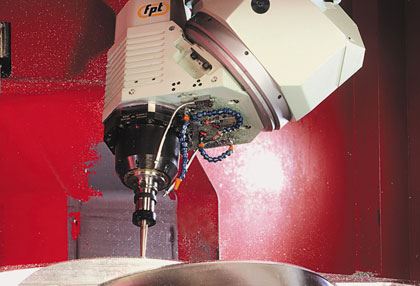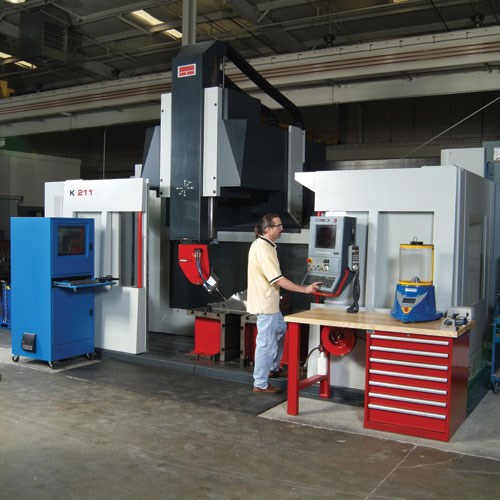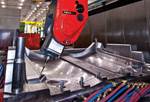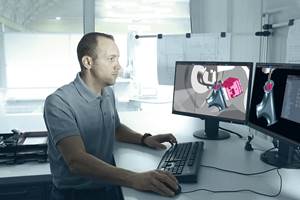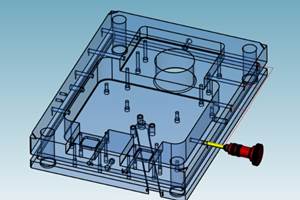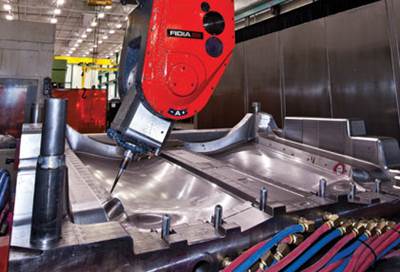2011 Leadtime Leader Awards: Large Shop Honorable Mention
MSI Mold Builders: Redefining Mold Manufacturing with Incremental Approval Approach.
MSI Mold Builders (Cedar Rapids, IA), winner of the Leadtime Leader Large Shop: Honorable Mention, relies on its 75 employees’ unwavering dedication and team-driven principles—coupled with lean strategies aimed at reducing waste on the shop floor—to deliver its customers high quality plastic injection, structural foam, structural web, rim, gas assist, external gas and blow molds. Industries served include computer and business machine, medical diagnostics, material handling, sporting goods, lawn and garden, appliance, consumer electronics, outdoor recreation, agricultural, heavy equipment and transportation. MSI also provides sampling capabilities with Engle and Cincinnati molding presses with capacities up to 1000 tons.
Average leadtimes are six to eight weeks, which the company maintains by defining and refining its manufacturing process. “We use an incremental approval process that begins with mold concept and continues through final design,” MSI President Roger Klouda explains. “Incremental approvals for material approval and concept to speed the flow of production, beginning as early as 12 hours following receipt of the part database and continuing throughout the design and manufacture of each mold.”
Lean Strategies
In order to alleviate the impact that foreign competition has had on MSI, the company’s continual focus on manufacturing and engineering process and flow has decreased costs, Klouda notes. “We have tightly defined standards for engineering to provide design direction as well as standardization of mold components and features in the design,” he elaborates. “This works particularly well in the mold base where all common geometry becomes a defined feature. Then, using feature recognition CAM software on the shop floor, program creation becomes more automated and costs are reduced.”
The lean manufacturing principles the company established also play a vital role in MSI’s competitive edge. “Approximately 15 years ago, we visualized leadtime as a competitive advantage and tried to make significant changes, but realized we needed a person with manufacturing background to lead us out of the fog,” Klouda recalls. “We hired that person 10 years ago and the process and flow improvement began. Steve Kimm, our Operations Manager, came to us from a high-volume manufacturing environment that produced large appliances. Under Steve’s leadership we implemented lean about eight years ago and received our ISO certification six months ago.”
MSI has developed and adopted a defined and measurable process for each aspect of its business. “Once this was in place applying for ISO certification became a normal next step,” Klouda notes. “It drove use even deeper into the documentation phase and forced us to question some of our processes and the way they were measured. Certainly with written and documented processes in place the certification process was not as laborious as expected.”
Kimm combined several lean processes to devise a strategy for MSI. “While initially there was a big need for 5S, the focus became on flow, visual factory, waste elimination and standardized work and process,” Kimm says. “The flow of information is critical from order conception to shipping. How much waste is there because of the lack of information flow? When we are building a one-of-a-kind product, how much rework can be eliminated by standardized work, methods and check systems? The efficiency and leadtime is much easier when there is known information and there aren’t any mistakes.”
Finally, Kimm began to schedule jobs using a visual factory—a white board on the shop floor. “This laid out expectations and facilitated decisions,” Kimm states. “The employees meet daily at 2:30 to transfer into the night shift and ensure everyone is on the same page as far as job flow.
“We continue to improve our standardization and front-end flow through the design process,” Kimm continues. “We have identified strategies to better lay out expectations we have of the customer to allow them to help us do a better job for them. As most of our customers are custom molders, this will allow them to forward these expectations to their OEM customers to drive wasted time out of the process—or at least get them to better understand their ownership of delivery dates and our ability to make them.”
In the future, Klouda would like to revisit Continual Process Improvement (CIP) training. “We need to do this training again as some of our new employees haven’t had the training,” he states. “We still are utilizing the concepts on a daily basis yet additional formal training would be prudent. We are developing a more formal departmental meeting structure—sharing more data on a department rather than just corporate level, also to involve the employees more in decision development and solutions, and setting department goals as well corporate goals. We are truly a process- and flow-driven organization. We monitor factors critical to our success and adjust to market conditions.”
Related Content
Overcoming Barriers to Automation Integration in Precision Moldmaking
It’s easy to imagine the advantages automation offers the moldmaking process, but it's challenging to change one’s mindset, develop a plan and invest.
Read MoreHow to Automate Process and Design
Moldmakers can improve their operations and stop wasting time by taking these six steps for process and design automation.
Read MoreCAM Automation Increases Mold Production, Quality
Mold builder switches CAM software package after 20 years to take advantage of innovative programming strategies that reduce mold machining programming and processing times.
Read MoreAchieving Flexible Capacity with Automation
This high-mix, low-volume manufacturer embarked on a year and a half program to introduce robotics to its manufacturing process.
Read MoreRead Next
2011 Leadtime Leader Awards: Large Shop Winner
United Tool & Mold, Inc.: Charging Forward with Unique Mold Repair Niche.
Read MoreAre You a Moldmaker Considering 3D Printing? Consider the 3D Printing Workshop at NPE2024
Presentations will cover 3D printing for mold tooling, material innovation, product development, bridge production and full-scale, high-volume additive manufacturing.
Read MoreReasons to Use Fiber Lasers for Mold Cleaning
Fiber lasers offer a simplicity, speed, control and portability, minimizing mold cleaning risks.
Read More
